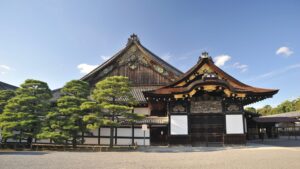Explore Tokyo’s Imperial Palace: Edo Castle Ruins and the Legacy of the Samurai Era
The Imperial Palace, located near Tokyo Station, is the former residence of the Tokugawa shoguns, known as Edo Castle. During the era of significant change at the end of the Edo Period (1603-1868), many people lived tumultuous lives. How was Edo Castle able to open without bloodshed despite the threat of invasion by Western powers? Let's examine the determination and commendable actions of the individuals who safeguarded the city of Edo from the ravages of war. The main figures include the last shogun, Tokugawa Yoshinobu, his retainer, Katsu Kaishu, two wives of the Tokugawa shoguns, a general officer of the Imperial Army, Saigo Takamori, and other important individuals.
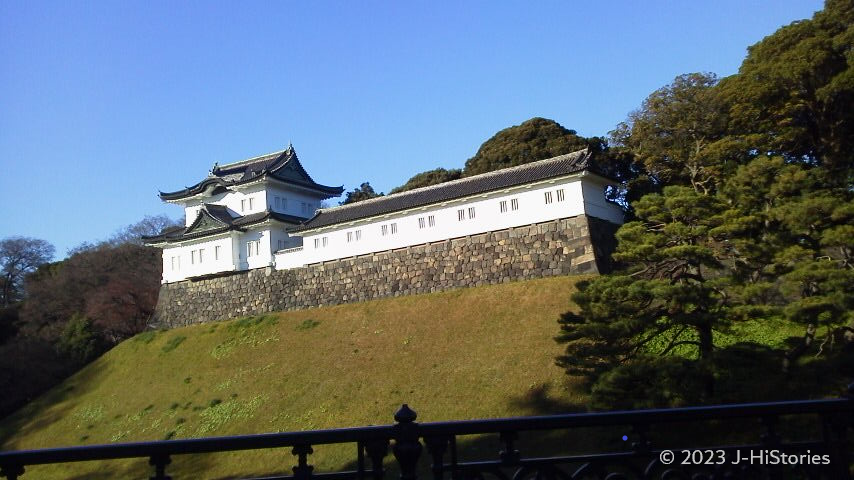
The Last Shogun Returned Political Power to the Emperor
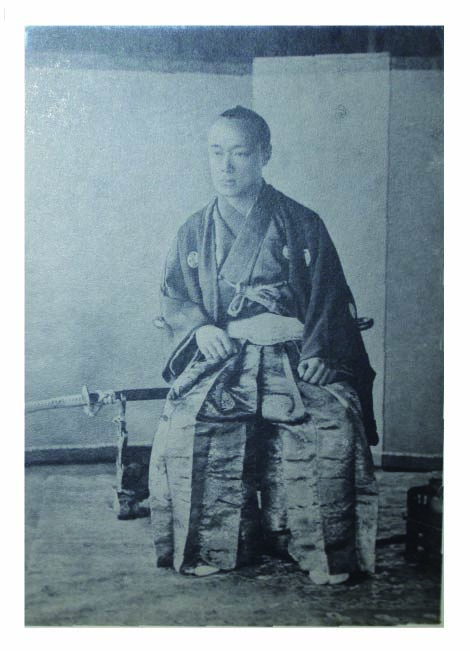
The 15th shogun of the Tokugawa shogunate, Tokugawa Yoshinobu (1837-1913, 徳川慶喜), returned political power to the 122nd Emperor Meiji (1852-1912, 明治天皇) at Nijo-jo Castle in Kyoto in November 1867. This marked the end of the Edo period (1603-1868), which had lasted over 260 years since 1603, and the end of the samurai government. The following day, Emperor Meiji granted imperial sanction to the report and issued the Restoration of Imperial Rule, which is commonly referred to as the Meiji Restoration. The Meiji Period (1868-1912) began.
Hard and Soft Negotiations Before the Imperial Army Attacked Edo

In 1868, the Imperial Army led by General Saigo Takamori (1828-1877, 西郷隆盛) from the Satsuma domain, marched towards Edo to defeat the remaining power of the Tokugawa Shogunate. On March 15th, Saigo planned to launch a full-scale attack on Edo Castle and its surrounding city, where approximately 1.5 million people resided. However, Saigo and Katsu Kaiyu(1823-1899, 勝海舟), a retainer of the Tokugawa Shogunate, had a meeting where they reached an agreement for the bloodless surrender of Edo Castle, just one day before the planned attack. Kaishu, who was sharp-witted and knowledgeable and had traveled to the U.S., where he learned about world affairs, acted as a mentor to Saigo previously. Several years before the events at Edo Castle, Katsu had expressed his opinion to Saigo about the necessity of collaborative government by several powerful domains, but not solely ruled by the Tokugawa Shogunate, in the face of the Western powers. During the negotiations, Katsu brought up Saigo's weak point of naval forces because Tokugawa's navy, which controlled the area from Osaka to Edo Bay, was overwhelmingly superior to Saigo's. Katsu said, "The Tokugawa navy can defeat you, but we will not do so since Shogun Yoshinobu's allegiance to the nation." Thus, Katsu succeeded in eliciting many concessions from Saigo.
How the Bloodless Surrender of Edo Was Achieved
There are several theories put forward as to the reason for the bloodless surrender of Edo Castle to the Imperial force. The first suggestion is that both leaders wanted to avoid further conflict between the Tokugawa and Imperial armies, which could then invite foreign invasion and colonization. Secondly, the two lawful wives of the 13th and the 14th Tokugawa shoguns were from the Imperial side. They pressed Saigo to broker peace desperately. One of the ladies, Tensho-In (1836-1883, 天璋院), was the adopted daughter of Shimazu Nariakira (1809-1858, 島津斉彬), a feudal lord of the Satsuma domain. He had previously elevated Saigo to an important position from that of a low-ranking samurai. Another, Kazu-no-Miya (1846-1877, 和宮) was the Imperial Princess as a sister of the 121st Emperor Komei (1831-1867, 孝明天皇), whose prince throned to Emperor Meiji. They filed their petitions many times. Lastly, it should be noted that Harry Parks, a minister from England, put pressure on Saigo not to attack Edo for two reasons: firstly, the Tokugawa had already expressed their clear intention to surrender by bowing low, and secondly, burning down Edo City would be a violation of international law. as a result, Parks remained cautious about Saigo and anchored three battalion ships in Yokohama Bay, near Edo Bay, to safeguard British interests. On May 3rd, Edo Castle was peacefully transferred to the Imperial side without any bloodshed, after being thoroughly cleaned by the ladies of the Tokugawa household.
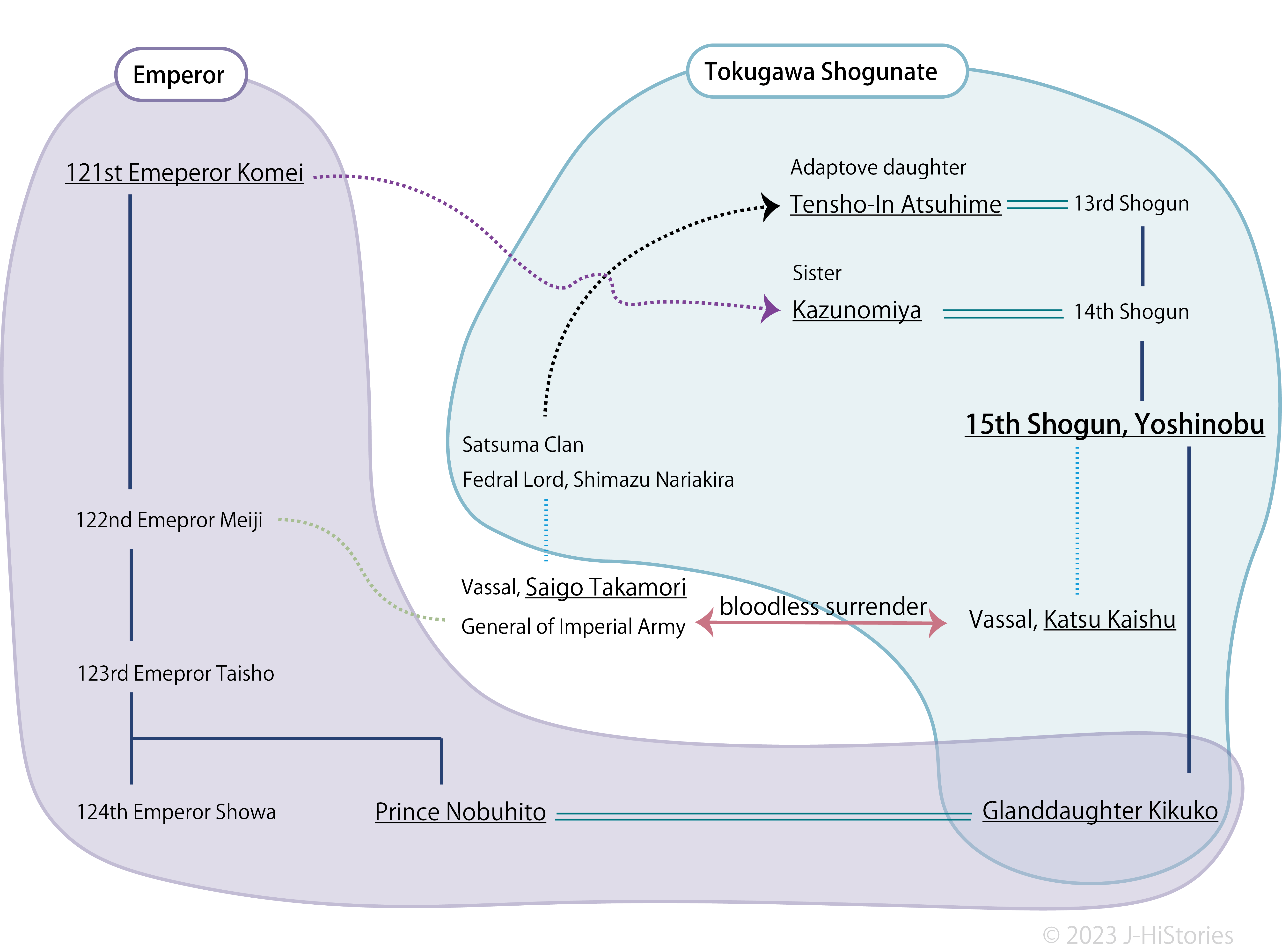
The Bloodless Edo Surrender: Tokugawa Yoshinobu’s Last Great Decision
When the Imperial flag was raised, he demonstrated his reverence and submitted to house arrest without protest. His actions as the shogun just a moment before became a driving force for the Tokugawa retainers, who contributed their assets, experience, and knowledge towards the modernization of the new Meiji era.
Tokugawa Was Restored to Honor Both in Name and Reality
Thirty years later, in 1898, Tokugawa Yoshinobu visited the Imperial Palace, the former Edo Castle, and was granted an audience with Emperor Meiji. Four years later, in 1902, he was granted the title of duke, thus fully restoring his honor. More joyous events followed. Tokugawa Yoshinobu’s granddaughter, Tokugawa Kikuko (1911-2004, 徳川喜久子), married Prince Nobuhito (1905-1987, 宣仁親王), a grandson of Emperor Meiji, in 1930. The original Tokugawa family line has continued till today.
The Imperial Palace Expresses the Profound History of the Tokugawa Shogunate
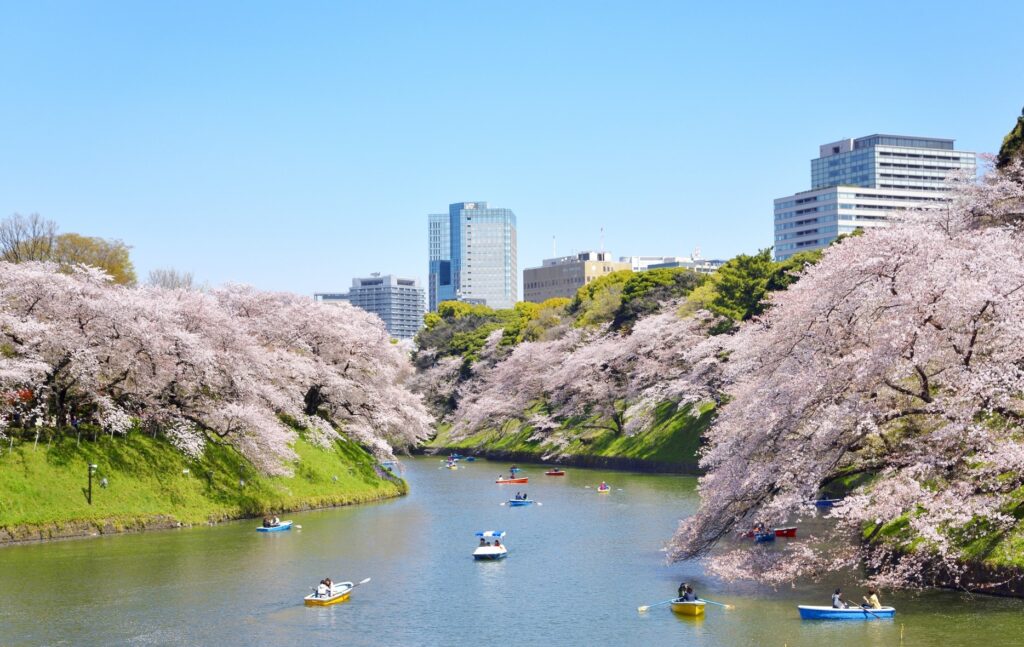
Please enjoy a visit to the Imperial Palace, the former Edo Castle, while reflecting on the rich history of the Tokugawa shogunate during and after the Meiji Restoration. The grounds boast several notable features, including gardens, gates, the mound of Castle Tower, stone walls, and moats, which provide a glimpse into the grandeur of the past. Passing through the Otemon Gate, the main entrance of the Edo Castle, visitors will be greeted by the breathtaking East Garden of the Imperial Palace. This area once housed Honmaru, the main building of the castle, as well as Ninomaru, the second bailey, and Sannomaru, the third bailey. The circuit-style Ninomaru garden is particularly noteworthy, featuring 260 trees from each prefecture in Japan. In the spring, visitors will be delighted by 200 cherry blossoms that bloom along the picturesque Chidorigafuchi moats.
Recommendation to visit
Edo Castle ruins and Imperial Palace
- Access: 10-minute walk from Nijubashi Station or Otemachi Station on the subway. → for more information

